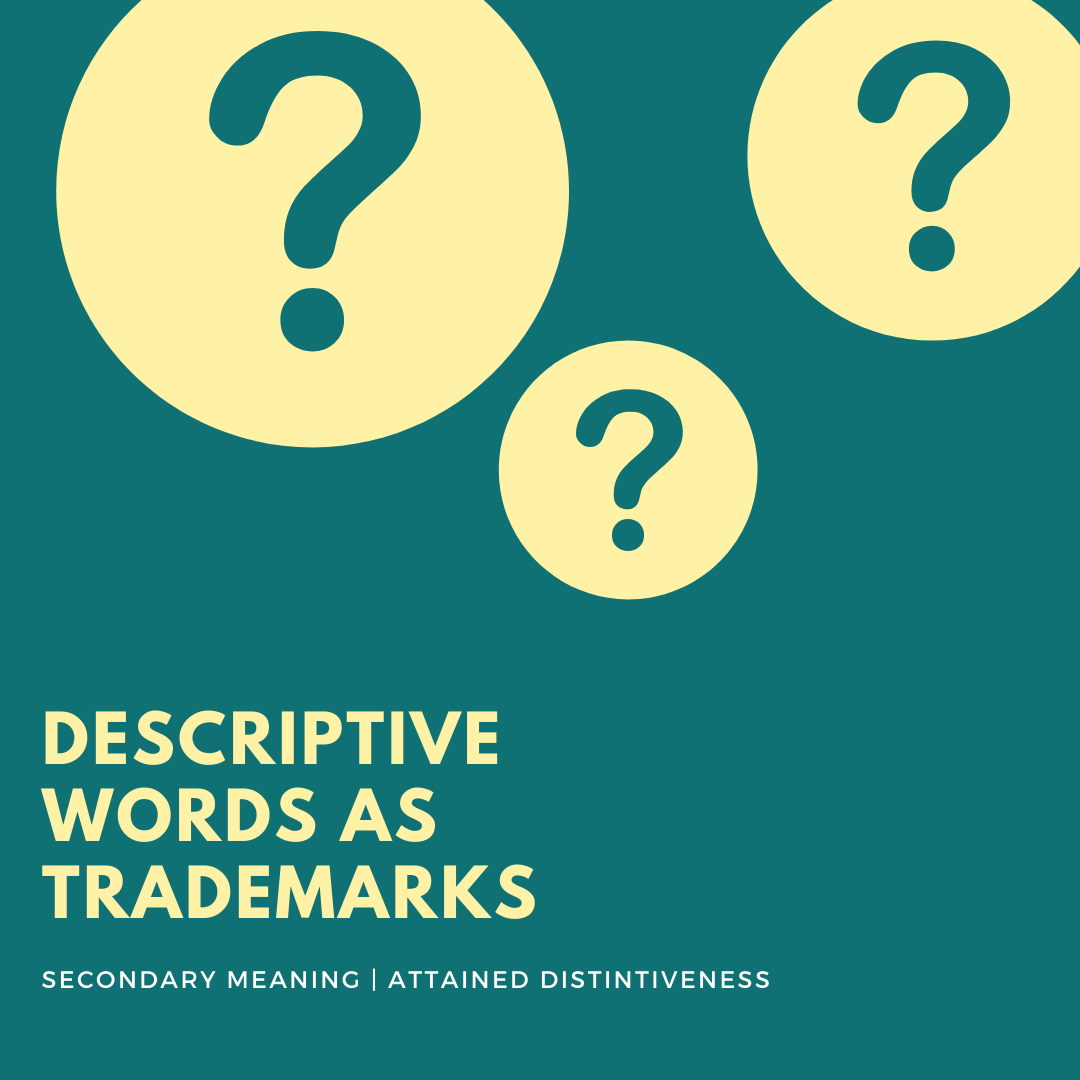In common parlance, a descriptive word is a word that describes the subject. The best way to explain a descriptive word is that it is an adjective, i.e., a word that names an attribute of the noun. Insofar as a trademark is concerned, a descriptive word identifies the characteristics of the product or the service to which the mark pertains. Sugar Free for a sugar substitute is a classic example of a descriptive mark. Sugar Free is a descriptive mark as it draws a reference to the product containing ‘aspartame’, a sugar substitute.
Can a descriptive word be registered as a trademark?
The simple answer to this is no. The Indian Trademark Act, 1999, does not allow descriptive words to be registered as a trademark. Section 9(1)(b) of the Act prohibits descriptive trademarks. Specifically, the section prohibits marks or indications that serve to designate the kind, quality, quantity, intended purpose, values, geographical origin or the time of production of the goods or services or other characteristics of the goods or service.
In the case of Marico Limited v Agro Tech Foods Limited FAO(OS) No. 352/2010, the Delhi High Court, held that the owner of the mark Losorb could not assert a monopoly over the term ‘low absorb’ for edible oil products. The term low absorb is descriptive, and it cannot be monopolized by one business.
Is the bar on registration of a descriptive trademark absolute?
No. There is an exception to this rule. If a mark has acquired distinctiveness or secondary meaning by virtue of long-standing use and people associate the mark with the corresponding goods/services, such a mark, even if descriptive, may be registered as a trademark. Also, if the descriptive mark is a well-known mark, as defined under Section 2(1)(zg) of the Act, it may be registered as a trademark. Therefore, a descriptive mark cannot be registered as a trademark unless it has acquired distinctiveness or secondary meaning, or it is a well-known mark. Secondary meaning in this context means that other traders in the proprietor’s line of trade associate the descriptive mark with the goods or services of the proprietor.
The Supreme court in the case of Godfrey Philips India Limited v Girnar Food & Beverages (P) Ltd, [2005] 123 Comp Cas 334 (SC), a descriptive trademark may be entitled to protection if it has assumed secondary meaning, by virtue of which, the mark has come to be associated solely with a particular product or as being from a specific source.
Therefore, secondary meaning means that a consumer directly relates the trademark to the business/product despite the mark prima facie appearing to be a descriptive word or image.
What is the problem with a descriptive trademark?
The whole point of a trademark is to enable the differentiation between the products or services of one business from another. A trademark helps consumers associate a product or service with the source; it endows a company with a distinctive character, which allows consumers to recognize the source of the goods or services.
As such, selecting a strong mark is of utmost importance. Every business wants to carve a niche for itself in the consumers’ world. Consumers correlate the goodwill, reputation, and quality of a company with the trademark of the business. Therefore, a strong and distinctive brand name can reduce the chances of confusion between any two firms in the minds of the consumers.
A descriptive mark hampers the distinctive character of a trademark, thus making it more vulnerable for passing off. Moreover, proving that the descriptive trademark has acquired secondary meaning is very difficult. In Cadila Healthcare Ltd v Gujarat Co-operative Milk Marketing Federation Limited and Ors, FAO (OS) No. 62/2008, the Delhi High Court held that while the mark Sugar Free had attained distinctiveness, given its highly descriptive nature it could not be protected beyond the goods for which it had been used and with which it was connected.
This case shows that even if a descriptive mark attains distinctive character, its protection is limited only to the particular goods which it has been used for. As such, a descriptive trademark is a weak mark and should, as far as possible, be avoided while choosing a trademark.




